HKTDC Wine & Spirits Exhibition: the top four trends of 2024
By Eloise FeildenWhat do Czech wine, cartoons and Kiwi-flavoured vodka have in common? They all contributed to the buzz at this year’s HKTDC Wine & Spirits Fair which took place in Hong Kong last week. Eloise Feilden reports on the most exciting trends from the show.
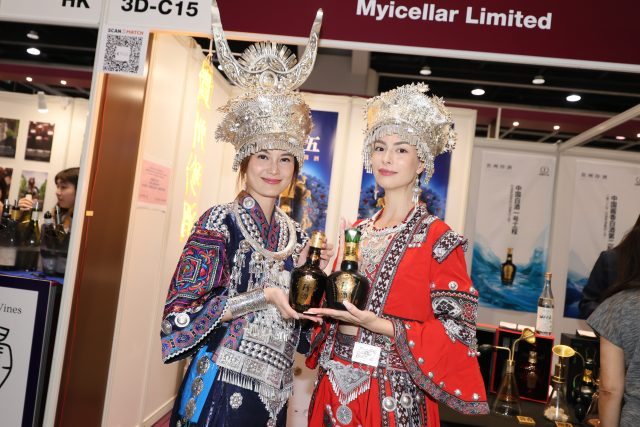
Eastern Europe travels East
Winemakers from Eastern Europe made up a significant presence at this year’s HKTDC Wine & Spirits Fair, with stands from the Czech Republic, Belarus and Georgia, an EU member state, all in Hong Kong.
The Czech wine industry had the largest stand of all Eastern European nations, and producers were keen to develop business relationships with Asian buyers and distributors, using Hong Kong as a hub.
Filip Lutzky, executive manager and winemaker at Czech winery Obelisk, told db Asia that while Czech wine’s presence in Asia pre-Covid was significant, since then it has “not been easy for us”.
Obelisk desires to be visible in Hong Kong as a “gateway for Asia”. Lutzky noted interest from buyers in Hong Kong, Taiwan, Mainland China and Thailand. “We are here to be discovered,” he said.
Czech winemakers present at the fair were “export focused”, Lutzky said, explaining that when it comes to domestic sales, “if you succeed outside, you will be successful in the local market afterwards”.
Czech Republic is “really a beer market”, Lutzky admitted.
The country has a total of 17,000ha of vineyards, similar to that of Alsace in France. Its wine regions are made up predominantly of small growers and family winemakers, with more than 19,000 registered growers in the country, according to national statistics.
Households in the Czech Republic are permitted to produce 1,000l of wine each year free of tax, many of whom do so for personal consumption.
Lutzky said that when it comes to export, the focus is on Palava (a crossing of Gewurztraminer and Muller Thurgau), the country’s national grape variety. “It will open markets for us,” he said, arguing that Czech wines “need to have something different” in order to stand out from more well-established European wine regions.
The cuteification of wine and spirits
When it comes to marketing regulations, the UK imposes strict rules which prevent alcohol businesses from using designs which could potentially appeal to children. This often means no cartoonish designs or references to popular children’s characters. In September, for example, regulator The Portman Group banned an Italian producer from selling its Hello Kitty-themed wine in the UK in its current packaging after it found it to have “particular appeal to under-18s”.
But associations with cartoons are different for different markets, and in Asia playful and colourful designs are all the rage.
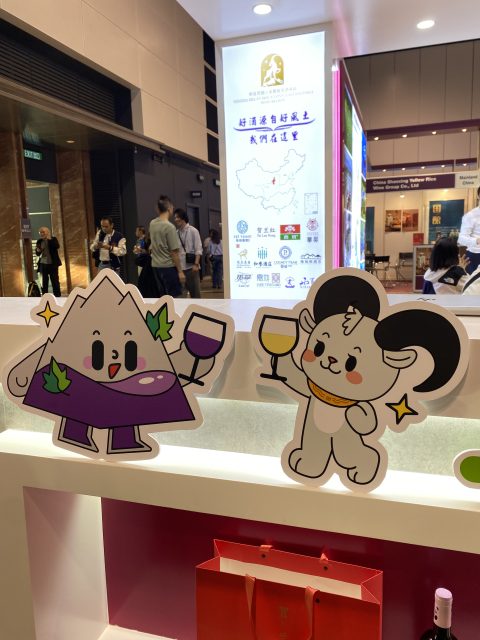
China’s Ningxia wine region, for example, now has its own cartoon mascot. A comic version of the region’s famous Blue Sheep is depicted holding a glass of wine, while the Helan mountain itself, a key winemaking sub-region in Ningxia, is personified with manga-like facial features. The design is the brainchild of the region’s wine committee, and was created in the hopes of bringing more attention and recognition to the region and its winemakers.
Partner Content
Ningxia is not alone in its cuteification of alcohol. Wine Luxe, a Hong Kong-based lifestyle magazine, was present at the HKTDC fair with its Hanabi gin, the branding of which centres around two illustrated cats. The brand invited Japanese illustrator Nekosuke to design the first label for the gin range, and all expressions also feature silver and gold leaf and season-themed backdrops.
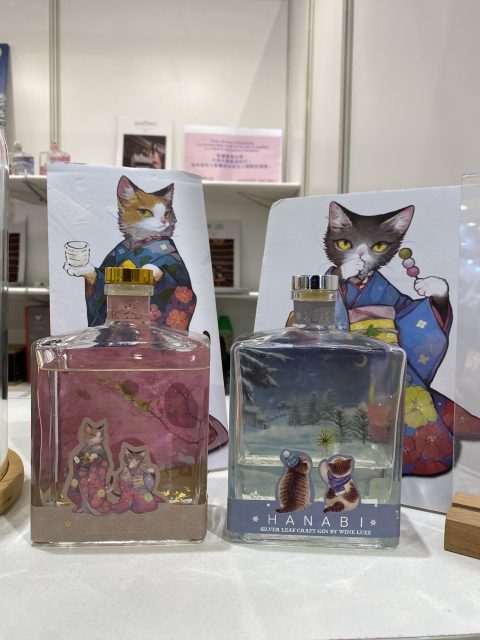
In July the magazine announced it would be re-releasing its Hanabi Summer Gin after it was first launched in 2021. According to its Instagram, “Japanese illustrator Natsu San designed and created two cute cats living in Japanese clothes, enjoying the fireworks festival in Japan. The bottle body uses three-dimensional design to bring the images of two cats to life, as if they were in the festivities. The wine has more golden dots, and as long as it is gently shaken, there will be a bloom of flowers, like a fireworks festival.”
Spirits: flavour comes first
One thing that wasn’t lacking from this year’s exhibition was flavour. From Kiwi and pineapple to coffee, flavoured spirits were hard to miss.
Grand Matriarch Distilling Company, a vodka micro-distillery located on the Sapphire Coast of New South Wales, is tapping into interest in flavoured spirits.
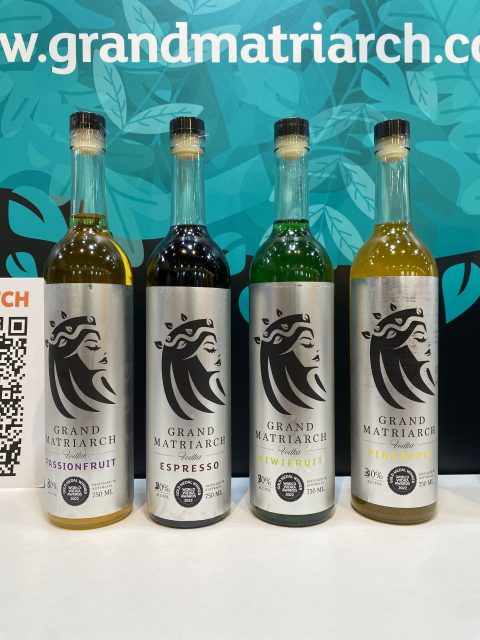
Its range of flavoured vodkas include Butterscotch, Espresso, Spiced Apple, Vanilla, Passionfruit, Pineapple and Kiwi, all of which are bright in colour but contain only natural colourings.
Coral Reynolds, the company’s founder, told db Asia she plans to expand the flavoured vodka range to include three Chinese-inspired expressions in the hopes of appealing more to consumers in that market. Although still to be confirmed, she noted that Green Tea, lychee and pear are on the list of potential new flavours for the distillery.
Hong Kong’s buzz is back
The HKTDC has calculated that 8,200 trade buyers from 61 countries and regions were present at this year’s Wine & Spirits Fair, up from 7,000 from 49 countries in 2023. The buzz was palpable in 2024; the fair took place just weeks after Hong Kong announced a reduction in taxation on spirits imports, the impact of which could be a huge boost for drinks brands and distributors operating in the region.
For a number of years the pressure has been mounting on Hong Kong and its role as the drinks hub for Asia. The Covid-19 pandemic, as well as political tensions in the region, shifted some attention to Singapore in Southeast Asia, with some key players suggesting that it could become the new wine and spirits hub for the wider region. But this year’s HKTDC fair highlighted Hong Kong’s resilience in the face of it all.
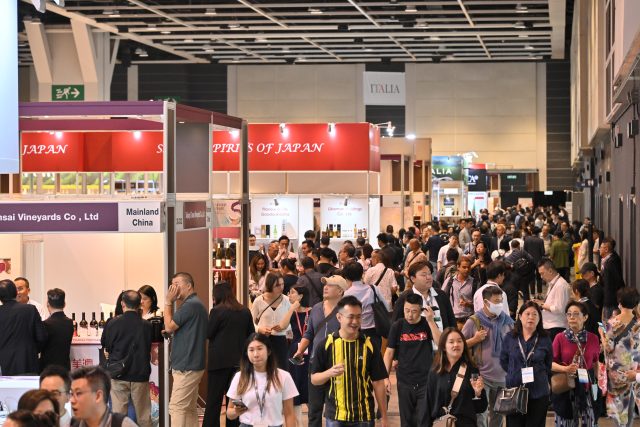
Sophia Chong, deputy executive director of the HKTDC, noted the particular increase in buyers from ASEAN (Association of Southeast Asian Nations) countries including Indonesia, Thailand, Malaysia, the Philippines and Vietnam, suggesting that buyers in Southeast Asia still see Hong Kong as the market hub. Japan, Taiwan and Mainland China were also well represented.
“Global buyers are keen to come to Hong Kong to participate in the Wine and Spirits Fair, promoting Hong Kong as a regional trading hub for wines and spirits,” she said. Last month’s policy address, which announced the reduction in tax on spirits, will provide a well-needed boost.
Chong said it is “expected to enhance the trade of high-end spirits”. More than a quarter of exhibitors at the fair brought spirits from around the world, including Chinese baijiu, whisky, vodka, brandy, and Chong said the exhibition’s organisers were “glad to see that so many exhibitors and buyers interacted with each other, seizing the business opportunities brought about by the new policy”.
Related news
The Macallan launches Hong Kong-inspired whisky for HK$37,000




